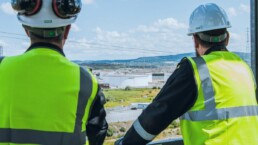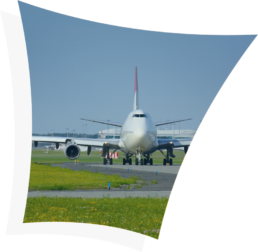Sustainable Aviation Fuel
Lighthouse Green Fuels will produce advanced second-generation SAF. This has the potential to reduce lifecycle greenhouse gas emissions by up to 80% compared with conventional fossil-derived jet fuel*. Using non-recyclable waste and waste biomass as the feedstock, rather than crops or used cooking oil, has many advantages including avoiding landfill and plentiful supply.
In the future, we plan for the Project to use local carbon capture and storage (CCS) infrastructure which has the potential to reduce the greenhouse gas emissions of our SAF by up to 200%.
With access to CCS technology, it will be possible to prevent carbon dioxide from entering the atmosphere and produce a negative-emission fuel. In other words, more carbon will be avoided or removed from the atmosphere than released.
Lighthouse Green Fuels will save approximately 350,000 tonnes of carbon dioxide emissions per year compared with conventional aviation fuel. With future plans to connect Lighthouse Green Fuels into local CCS infrastructure, this could increase to 750,000 tonnes of carbon dioxide emissions saved per year. This is equivalent to removing 350,000 petrol cars from UK roads for each year the Project is operational.
SAF is much better for the environment than conventional jet fuels, such as those based on kerosene produced from fossil fuels. It not only produces less of the harmful Nitrogen Oxide and Sulphur Oxide emissions when burned in jet engines, but also reduces contrails which themselves also have a greenhouse effect. Additionally, synthetic kerosene found in SAF has a chemical composition of lower toxicity when compared with conventional kerosene. Production routes for advanced SAF also create the potential to unlock new feedstocks to produce the fuel, which could lead to further environmental benefits in the future.
*Currently, blends of up to 50% SAF are permitted.

Energy security
Recent world events have highlighted the importance of domestic energy security in an increasingly uncertain global economy. An important aspect of this will be the provision of domestically-produced fuel for the UK aviation industry. Lighthouse Green Fuels will have the largest SAF production capacity among all advanced SAF facilities in Europe, which signifies the Project’s vital role in ensuring the future of the UK’s energy security.
The UK also has access to permanent offshore geological stores (i.e. depleted oil and gas fields) which can be used to store carbon. Lighthouse Green Fuels intends to connect into these, and store the carbon emissions generated by the SAF production process via the local carbon capture and storage infrastructure.

Jet Zero
The UK government has committed to decarbonising the UK aviation industry by 2050 when it is intended that the UK will be a carbon-neutral country. As part of this commitment, the government announced a strategy for the aviation industry in 2022, known as the Jet Zero Strategy.
The Jet Zero Strategy states that SAFs are key in accelerating the transition to Jet Zero and represent an industrial leadership opportunity for the UK.
Within the Strategy, the government has committed to at least five SAF production plants being under construction by 2025 and for SAF to represent 10% of the UK aviation fuel mix by 2030. Lighthouse Green Fuels represents one of the five identified SAF plants and was awarded funding, totalling over £22 million, from the Department for Transport’s Green Fuels, Green Skies (GFGS) and Advanced Fuels Fund (AFF) competitions.
Aviation is frequently described as a ‘hard to decarbonise industry’. It currently depends heavily on energy-dense, climate-polluting fossil fuels. The sector contributed to around 12% of UK transport-related emissions in 2020 (Transport and environment statistics 2022 – GOV.UK (www.gov.uk)) and aviation has the potential to become the largest global carbon dioxide emitter, with passenger numbers predicted to grow from a pre-pandemic 4 billion in 2018 to 16 billion by 2050 (source: International Air Transport Association (iata.org)).
The challenge is to meet Net Zero with four times as many aviation passengers.
The solution is SAF – the Jet Fuel for Net Zero.